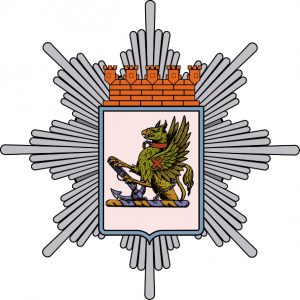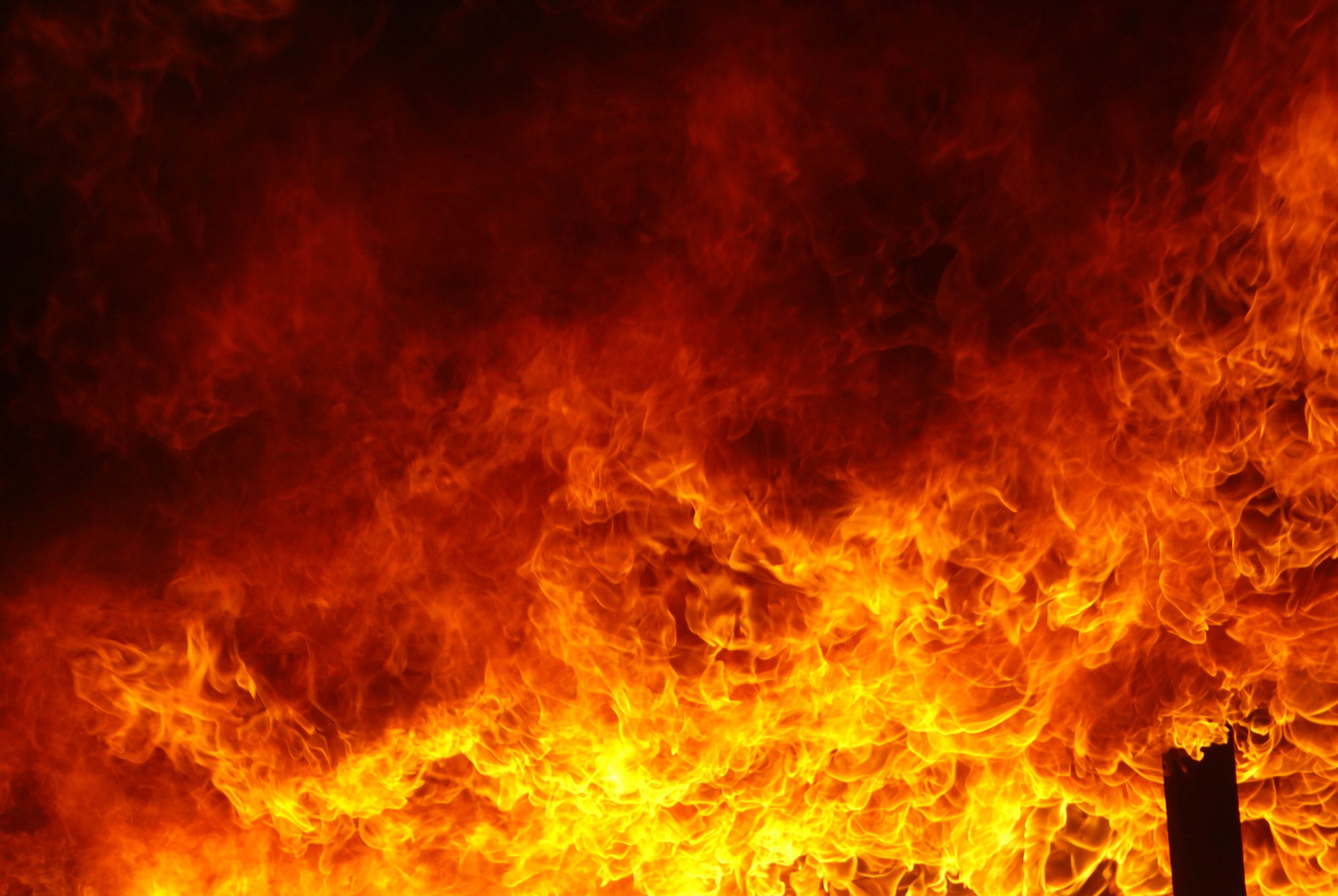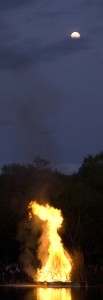Fire has been an important part of human life for millennia. We have used fire for cooking, heating, manufacturing, but also to destroy things. For the knowledgeable, fire is a tool that can be of great benefit to humanity. But the same knowledge can also cause humanity great suffering. Fire is a good friend but a dangerous enemy. This also characterizes mythology, where fire and conflagration occur in a variety of ways, in different guises and are often used as an instrument in different types of rituals. Below are some examples of how fire is described in mythology.
In Greek mythology the titan Prometheus stole the fire from the gods and gave it to mortals. The Titan carried the fire away from Mount Olympus in a fennel stalk – a method of transporting fire that is well known.
The Phoenix was a mythical bird that is associated with several cultures, and there are several variations of the story of the bird. The lowest common denominator is that the Phoenix was a fantastic golden-red bird whose body radiated the rays of the sun. Only one Phoenix could exist at a time. When the bird felt that death was near, which did not happen very often, it built a nest and set it on fire. The bird disappeared in the flames and from the ashes an egg emerged and hatched. The newly hatched Phoenix embalmed the ashes of its predecessor and flew with them to the city of the sun, where the ashes were placed on the altar of the sun god. In Egypt, the Phoenix bird was usually depicted as a heron, but in classical literature as a peacock or an eagle. From the ashes, in the fire.
In Greek mythology, Prometheus stole fire from Olympus and gave it to humans, and with it came technology, knowledge and civilization. For this he was sentenced to eternal torment. Fire was thus seen as both a blessing and a curse. In Norse mythology, Loge was a personification of fire. Loge and Loki competed to see who could eat the fastest. They ate the food equally quickly, but Loki had only eaten the meat. Loge won, as he had eaten both the meat and the bones and had eaten them out of the trough. This says something about the destructive power of fire.
In the Roman army, Florian was a third century officer stationed in modern Austria. He was a military administrator of the town of Noricum, and a closet Christian. He is said to have stopped a town from burning by throwing a single bucket of water on the blaze, and thus his association with fire-fighters and those who protect us from fire, including chimney sweeps. When ordered to execute a group of Christians during the persecutions of Diocletian, he refused, and professed his own faith. He was scourged, flayed alive, a stone tied to his neck, and dumped into a river. Body was later retrieved by Christians and buried at an Augustinian monastery near Lorch. The relics were translated to Rome in 1138 and part of the relics were given to King Casimir of Poland and the bishop of Krakow by Pope Lucius III, which led to Florian’s patronage of Poland and Upper Austria.
Saint Florian’s patronage includes against battles and fire, Austria, barrel-makers, brewers, chimney sweeps, drowning, fire prevention, fire-fighters, and floods. He is represented in various ways, usually by a young man, sometimes in armour, sometimes unarmed, pouring water on a fire. Other patron saints with patronage related to fires and fire fighting are Barbara, Eustachius (also: Placidus or Eustace).
The insignia of the fire service is the Maltese Cross (also: Cross Pattee-Nowy). This cross represents the fire service ideals of saving lives and putting out fires. The fire service borrows the cross from the Knights of Saint John of Jerusalem, which was a charitable, non-military organization that existed during the 11th and 12th centuries. The Knights of Hospitallers, as they were also known, because of their charity toward the sick and poor in setting up hospices and hospitals, adopted a white or silver cross on a dark background. Later they assisted the Knights of the crusades through their goodwill and also through military assistance in an effort to win back the Holy Land. The Knights of St. John eventually moved to the Island of Malta, The island for which the Maltese Cross was named. The need for an identifiable emblem for the Knights had become crucial. Because of the extensive armour which covered their bodies and faces, the Knights were unable to distinguish friend from foe in battle. They chose the Cross of Calvary as their symbol since they fought their battles for a holy cause. The cross was later called the Maltese Cross and represented the principles of charity, loyalty, chivalry, gallantry, generosities to friend and foe, protection of the weak, and dexterity in service. During the Crusades, many knights became fire-fighters out of necessity. Their enemies had resorted to throwing glass bombs containing naphtha and sailing their vessels of war containing naphtha, rosin, sulphur, and flaming oil into the vessels of the knights. Many knights were called to do heroic deeds by rescuing fellow knights, and extinguishing fires.
The four arms represent the cross on which Jesus suffered, while the eight points symbolise the Beatitudes given on the Sermon on the Mount (Matthew 5:3-10):
- Blessed are the poor in spirit, For theirs is the Kingdom of Heaven.
- Blessed are those who mourn, For they shall be comforted.
- Blessed are the meek, For they shall inherit the Earth.
- Blessed are those who hunger and thirst for righteousness, For they shall be filled.
- Blessed are the merciful, For they shall obtain mercy.
- Blessed are the pure in heart, For they shall see God.
- Blessed are the peacemakers, For they shall be called children of God.
- Blessed are those who are persecuted for righteousness’ sake, For theirs is the Kingdom of Heaven.
But I don’t go to any church, so how would I know….
In the Swedish case, the eight point stands for
- Knowledge (kunskap)
- Perserverance (uthållighet)
- Ingenuity (skicklighet)
- Discretion (takt)
- Courage (mod)
- Solicitude (omtanke)
- Loyalty (lojalitet)
- Assiduities (uppmärksamhet)

The science of fire and combustion has also long fascinated people. In the 17th century, interest in science increased, and the so-called phlogiston theory emerged as an attempt to explain fire. This theory claimed that a special substance, phlogiston, was bound in all combustible substances. Phlogiston was released when something burned, and was absorbed by the air until it became saturated and no further combustion could take place. The theory said that the more phlogiston a substance contained, the better it burned. This was demonstrated with simple experiments that involved showing that the ashes of something that has burned up weigh much less than the original substance. Since phlogiston disappears during combustion, the remains of the fire are of course much lighter. And a highly flammable substance loses more weight during combustion than a difficult-to-ignite one. The evidence for the existence of phlogiston could not be clearer.
In the latter part of the 18th century, the French chemist Antoine Lavoisier laid the foundation for what later replaced the phlogiston theory: that oxygen was the basis for combustion. The phlogiston theory was certainly on the right track, but it had been turned upside down. It is not any substance that leaves the burning material, but rather it is the oxygen in the air that combines with the substances found in the material being burned. The fact that the weight decreases is simply because a lot of the combustion products are gaseous and leave the fuel. It is also possible to do simple experiments that show that the residual products after combustion can weigh more than the original fuel, even though gaseous combustion products have also been formed. The oxygen in the air has combined with the fuel and formed new substances.
Today we know a great deal about fire, combustion and combustion. But the modern science of fire is relatively young compared to, for example, medicine or the study of solids. Today’s fire science can be said to have emerged sometime after the Second World War. There is still much we do not know and it is important that fire research continues, not least because fire is of great importance to the safety of humanity and has a major impact on the functionality of modern society. Unfortunately, it has often been major fire disasters that have driven development forward. Perhaps the clearest example is the fire at the Stardust nightclub in Dublin in 1981, where 48 people died. There are many other examples of major events that either started with a fire or resulted in a fire. Take, for example, the accident in Chernobyl in 1986. In addition to the radiation problem with the radioactive material itself, there were enormous problems with fighting the fires that broke out, and the fires in turn contributed to spreading radioactive material over a large area. Or the attack on the World Trade Center in New York in 2001, where the fires that broke out caused several buildings to collapse and the rubble burned for several days after the collapse.
There are also other more recent events that have received a lot of attention. Examples include the fire on Herkulesgatan in Gothenburg in 1998, where 63 young people died, and the fire at the Copenhagen Stock Exchange in April 2024, where great cultural values literally went up in smoke.
Today’s fire science is, on the one hand, about improving and developing knowledge and creating an even better understanding of how fire starts and spreads, including how different types of materials react in a fire. On the other hand, it is about creating better mathematical models for fire. The purpose of these models is primarily to recreate and, above all, predict how a fire will develop and affect people, property and the environment, without having to conduct too extensive experimental activities. But it is also about creating better knowledge-based conditions for the fire service to deal with fires in buildings.
The research also involves, for example, developing testing methods for building components or investigating how new technology behaves in a fire. In short: fire engineering science aims to make society safer and more resilient to fire, through continuous knowledge creation.
Fire experiments are often expensive and can be difficult to replicate. Repeatability is difficult to achieve because the experimental setup simply burns up. It is not always easy to accurately recreate an experimental setup, especially large-scale experiments. However, experimental work on both small and large scales is still important for increasing understanding of fire. And it’s so much fun running experiments with fire.

